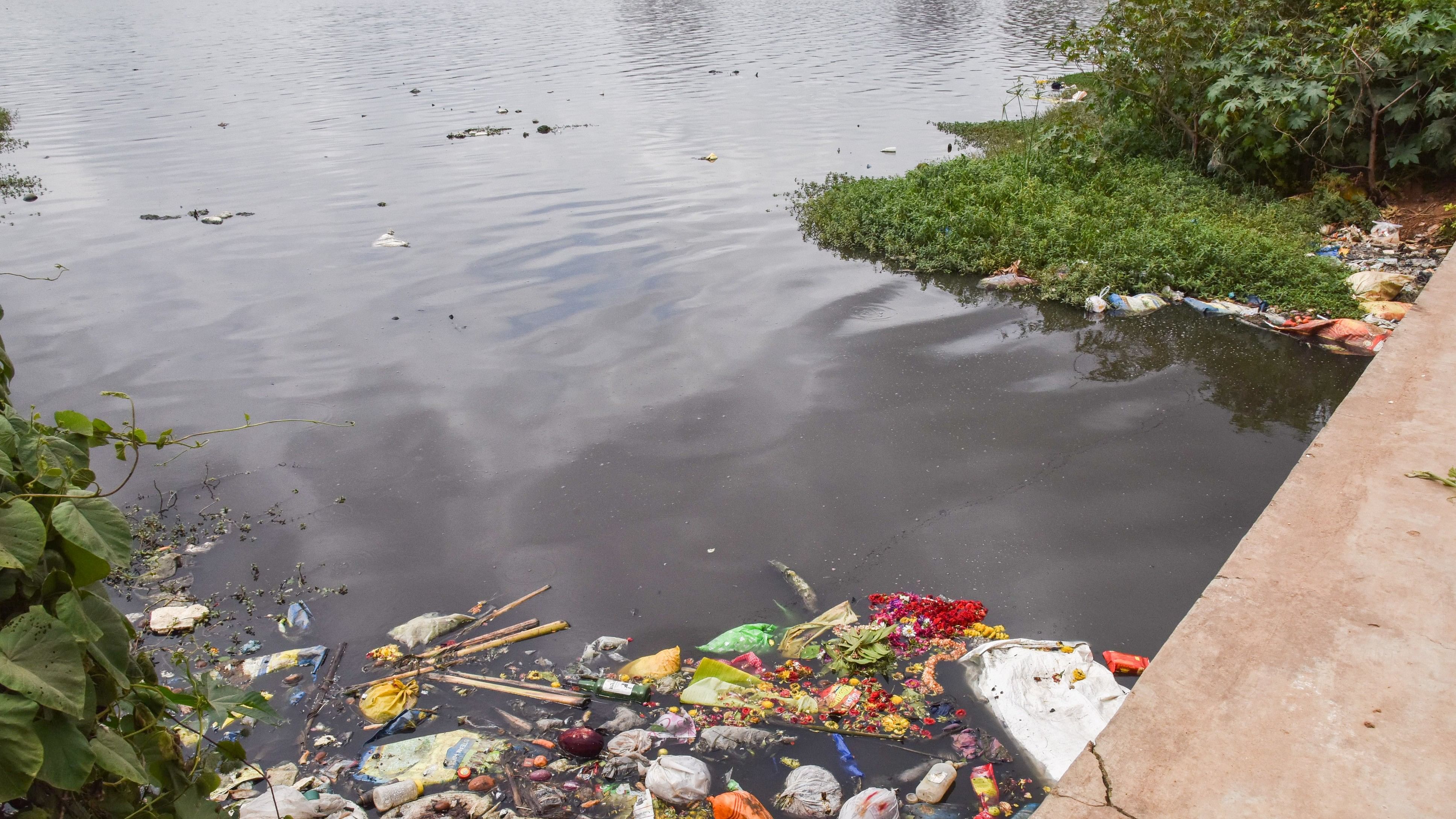
Many lakes within Bengaluru and on the periphery have become harbours for sewage water, sometimes treated, sometimes untreated.
Credit: DH File Photo
Bengaluru, known as the ‘Garden City’ of India, is currently grappling with a significant water crisis, sparking debates surrounding water security, equitable water access, water management, citizen awareness, and more. Amidst these discussions, a fundamental question arises: does the government possess a comprehensive vision for ensuring water security in the city?
Recent reports from the Karnataka government indicate that Bengaluru faces a demand for 2650 million litres per day (MLD) of water, with 1450 MLD sourced from the Cauvery River and the remainder from groundwater. The crisis stems primarily from the depletion of groundwater reserves, with approximately 50% of the city’s 14,000 borewells running dry due to inadequate recharge and minimal rainfall in the past year.
Understanding the groundwater recharge dynamics in Bengaluru reveals a close interconnection with the city’s lakes. Historically, manmade tanks and lakes that usually hold the most rainwater in a year contributed significantly to groundwater replenishment. However, Bengaluru, once renowned for its lakes and referred to as Kalyaninagara (City of Lakes), now struggles with a mere fraction of its original waterbodies, with only around 220 major waterbodies remaining. The proliferation of real estate development, particularly spurred by economic reforms in 1991 and subsequent IT industry expansion, has led to the illegal conversion of many waterbodies into residential layouts, IT parks, and vacant lands, erasing their identity as critical water resources.
Lakes being the primary source of groundwater recharge in the city, it is essential to restore the lakes to save the urban water system in Bengaluru. Although contemporary urban social and environmental activism has spurred a rejuvenation drive for Bengaluru’s lakes recently, the result is still far from combating the present water crisis. What might be the possible reasons?
Primarily, the efficacy of the present ‘restoration model’ is subject to scrutiny, revealing two principal shortcomings. Firstly, the prevailing restoration paradigm, whether by design or oversight, neglects the imperative of ‘making the water flow’ — a fundamental prerequisite for water stability in this urbanscape. The singular focus on individual lake restoration often overlooks the systems-oriented approach to lake restoration that exacerbates the fragmentation of water bodies and impedes groundwater recharge across interconnected hydrological systems. Failure to adopt a comprehensive approach, incorporating interconnected water bodies and infrastructural networks such as interconnected stormwater drains and channels, poses a perpetual risk of maintaining stagnant water bodies devoid of meaningful hydrological connectivity, rendering them ineffectual amidst the prevailing water scarcity.
Secondly, the emphasis on enhancing aesthetic appeal and recreational amenities during lake restoration endeavours often sidelines the pivotal role of water as a critical resource. This negligence disproportionately impacts heterogeneous urban communities reliant on lakes for provisioning and utilitarian purposes, including farmers, fishermen, and urban foragers, who find themselves marginalised in access to and rights to this essential resource. This exclusion also has long-term impacts on the regular maintenance work of the lake networks in the city.
The absence of a dedicated lake governance authority signifies a glaring deficiency in current governance structures. A primary step, therefore, is to establish a specialised competent lake department comprising subject matter experts in fields such as land management, hydrology, ecology, and community development. Embracing a comprehensive governance framework equipped with a holistic perspective and efficient bureaucratic management, transcending the fragmented view of lakes as separate entities, holds promise for reevaluating the current restoration model.
Furthermore, active governmental support, both legal and moral, is crucial to encourage various grassroots initiatives led by environmental and social activists, along with concerned citizens and local communities, to rejuvenate and preserve the urban lakes. Initiatives like the Kere Mitra by the present government, while commendable, require greater promotion and utilisation, especially in lake-adjacent areas, to maximise the impact.
Additionally, policy interventions aimed at fostering and facilitating public-citizen partnerships for lake restoration and maintenance are necessary, thereby harnessing the collective efforts of diverse interest groups invested in the city’s lakes. Collaborating with scholars, activists, and traditional communities can enrich such efforts, nurturing a deeper understanding of the lakes’ relevance in addressing the city’s water crisis.
Finally, it is important to build a collective appreciation for the historical and ecological significance of Bengaluru’s lakes . Organising awareness campaigns and neighbourhood lake walks by Resident Welfare Associations highlighting the importance of local water bodies and their role in urban water management can foster a renewed epistemology of urban water management. The revitalization of lakes and their interconnected networks holds the promise of not only replenishing the groundwater but also envisioning the city of Bengaluru with a robust urban water system aligned with a sustainable water future.
(The writer is a PhD scholar at the Institute for Social and Economic Change, Bengaluru)